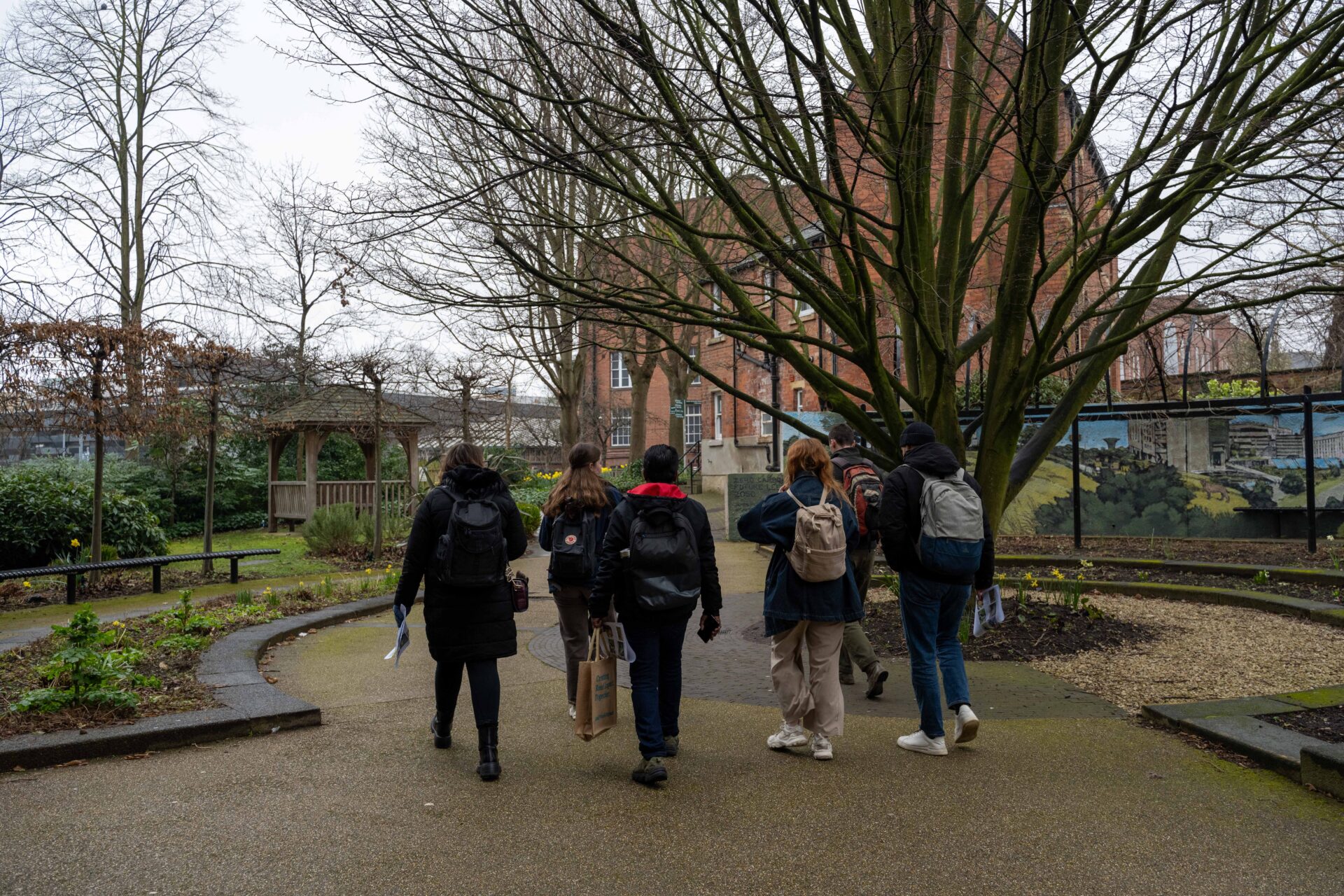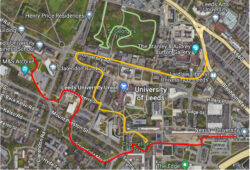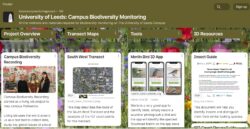A step-by-step guide to Biodiversity Monitoring

Hannah Long, Student Sustainability Architect has created this beginner friendly guide to biodiversity monitoring.
Monitoring can be done in your day-to-day life, helping you learn about the wildlife surrounding you and build a stronger connection with nature! Follow these simple steps to help contribute to our campus biodiversity database.
Preparing for biodiversity monitoring
Before setting off, make sure you have the correct equipment. This means good footwear and clothing, as monitoring is done all year round. You can also bring a camera or phone with you to take pictures and recordings. Binoculars are useful, but not essential!
Here are some useful apps for monitoring:
- For bird identification, Merlin is a great app which identifies the species through photo or sound recording.
- Download the iNaturalist app, which is where we collect our monitoring data. Join the ‘University of Leeds Campus Biodiversity Monitoring’ project to upload your findings!

It is a good idea to choose a route to walk before setting off. This could be your walk to work or a route around campus in your lunch break. To maximise the amount of biodiversity you will identify, try to choose a route with more green spaces. This can be areas with lots of trees to identify birds or flowers to find pollinators.
Where to walk on campus
Our campus has three transects (1km set routes used for monitoring) positioned across campus, which you can follow. These transects include the South-west transect (red), the central transect (yellow), and St George’s field (green).

Monitoring is a good activity to do with other people, so encourage others to join you and spend time together learning about biodiversity!
Whilst you are out
Once you have set off, there are a few things you can do to maximise your chance of finding wildlife.
- Walk at a slow pace and keep looking at all of your surroundings. This means looking up and down and not just straight ahead. We are looking to identify different species, birds, mammals, plants, fungi and insects, so think about where they may be positioned!
- Keep quiet when you spot something to avoid disturbing the species or scaring them off. If you have a pair of binoculars, now is the perfect time to identify the individual more closely!
- Take photos, videos or record sounds the species may be making. This will be very useful for species identification and recordings. If you get a good sighting, try to identify the species. To do this you can look out for key features the species may have, for example body shape, colourings, beak shape, number of legs (insects), and if the individual is found alone or as part of a group.
For further help identifying the species, we have a campus biodiversity monitoring padlet in which you can find various species ID guides.

Remember to take breaks when needed, to rest and enjoy being within nature. Taking a break and just watching can lead to a lot more appearances than whilst walking!
Recording using iNaturalist
We collect our data on campus biodiversity on iNaturalist, so upload your findings to contribute to our dataset. This can be done whilst you are out monitoring or when you are back.
The general information you need is the location of the individual, time and date when spotted, this should be linked to your picture or video, if you managed to take one. You then could make a prediction of the species if known, and iNaturalist will provide you with suggestions for this based on the location and image.
Make sure to have joined the ‘University of Leeds campus biodiversity monitoring’ project and upload your findings to this project.
For further help uploading on iNaturalist, a guide can be found on the biodiversity monitoring padlet.
More information
If you would like to find out more about biodiversity on campus, campus biodiversity monitoring sessions are held throughout the year, so keep an eye on our events page and our social media channels for more information and how to sign up!
Additionally, Wildlife Wanders sessions are held on the first Wednesday of the month, these are more casual sessions looking at species identification. Find out when the next Wildlife Wander is.
Head over to our biodiversity monitoring padlet to find more information on biodiversity monitoring on campus and how you can get involved further.
